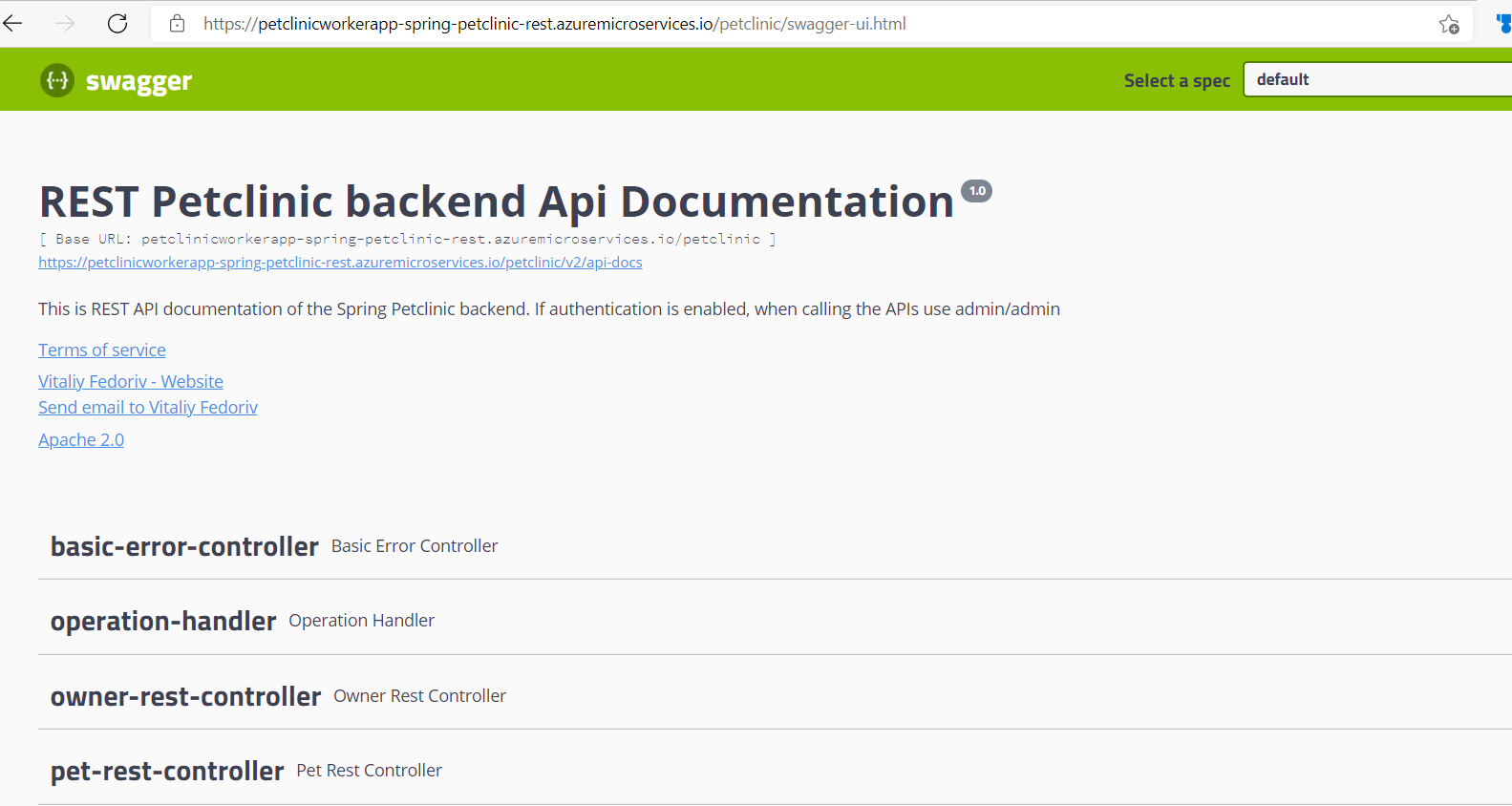This backend version of the Spring Petclinic application only provides a REST API. There is no UI. The spring-petclinic-angular project is a Angular front-end application which consumes the REST API.
See the presentation of the Spring Petclinic Framework version
git clone https://github.com/selvasingh/spring-petclinic-rest.git
cd spring-petclinic-rest
git checkout Azure
mvn clean package
docker run -p 9966:9966 springcommunity/spring-petclinic-rest
You can then access petclinic here: http://localhost:9966/petclinic/
There are actuator health check and info routes as well:
Install the Azure Spring Cloud extension for the Azure CLI using the following command
az extension add --name spring-cloudNote - spring-cloud CLI extension 2.1.0 or later is a pre-requisite to enable the
latest Java in-process agent for Application Insights. If you already
have the CLI extension, you may need to upgrade to the latest using --
az extension update --name spring-cloudSet the following environment variables required in the Azure Spring Cloud deployment below.
export SUBSCRIPTION=subscription-id # customize this
...
export RESOURCE_GROUP=resource-group-name # customize this
...
export REGION=westus2 # customize this
...
export SPRING_CLOUD_SERVICE=azure-spring-cloud-name # customize this
...Login to the Azure CLI and choose your active subscription. Be sure to choose the active subscription that is whitelisted for Azure Spring Cloud
az login
az account list -o table
az account set --subscription ${SUBSCRIPTION}Prepare a name for your Azure Spring Cloud service. The name must be between 4 and 32 characters long and can contain only lowercase letters, numbers, and hyphens. The first character of the service name must be a letter and the last character must be either a letter or a number.
Create a resource group to contain your Azure Spring Cloud service.
az group create --name ${RESOURCE_GROUP} \
--location ${REGION} az spring-cloud create --name ${SPRING_CLOUD_SERVICE} \
--sku standard --enable-java-agent \
--resource-group ${RESOURCE_GROUP} \
--location ${REGION}The service instance will take around five minutes to deploy.
Set your default resource group name and cluster name using the following commands:
az configure --defaults \
group=${RESOURCE_GROUP} \
location=${REGION} \
spring-cloud=${SPRING_CLOUD_SERVICE}Create a microservice app.
az spring-cloud app create --name spring-petclinic-rest --instance-count 1 --assign-endpoint true \
--memory 2 \
--jvm-options='-Xms2048m -Xmx2048m'Deploy Spring Petclinic rest application to Azure.
az spring-cloud app deploy --name spring-petclinic-rest \
--jar-path target/spring-petclinic-rest-2.4.2.jar \
--jvm-options='-Xms2048m -Xmx2048m'Copy the assigned url from the portal for the spring petclinic application as shown below and append /petclinic to the URL.
Your Swagger UI should show all the Rest endpoints in the project lke shown below.
If you run the Angular client by building Spring Petclinic Angular project then you will see the end to end application running like shown below.
This Spring petclinic rest sample is forked from spring-petclinic/spring-petclinic-rest.
This project welcomes contributions and suggestions. Most contributions require you to agree to a Contributor License Agreement (CLA) declaring that you have the right to, and actually do, grant us the rights to use your contribution. For details, visit https://cla.opensource.microsoft.com.
When you submit a pull request, a CLA bot will automatically determine whether you need to provide a CLA and decorate the PR appropriately (e.g., status check, comment). Simply follow the instructions provided by the bot. You will only need to do this once across all repos using our CLA.
This project has adopted the Microsoft Open Source Code of Conduct. For more information see the Code of Conduct FAQ or contact opencode@microsoft.com with any additional questions or comments.



